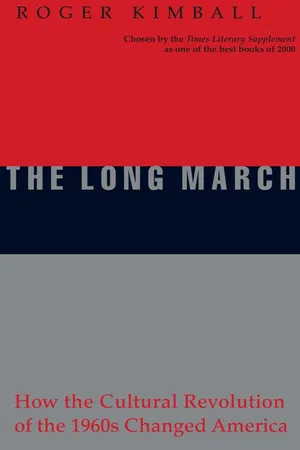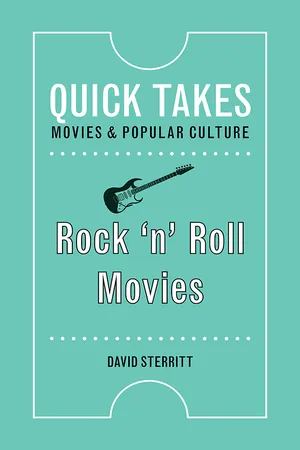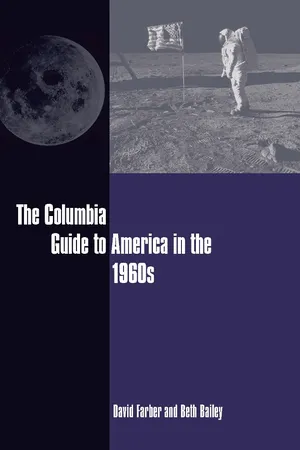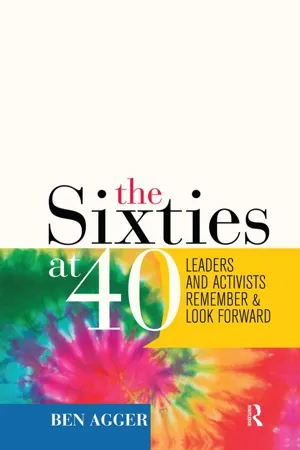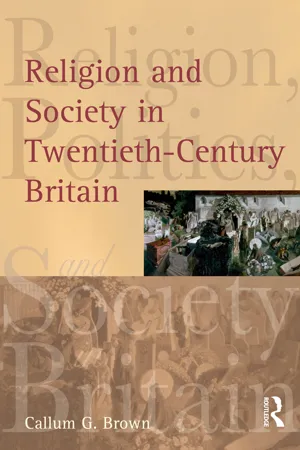History
The Swinging Sixties
The Swinging Sixties refers to a cultural and social revolution that took place in the 1960s, particularly in the United Kingdom and the United States. It was characterized by a flourishing of music, fashion, art, and youth-oriented subcultures, as well as significant changes in societal norms and attitudes. The era is often associated with liberation, experimentation, and a break from traditional values.
Written by Perlego with AI-assistance
Related key terms
6 Key excerpts on "The Swinging Sixties"
- eBook - ePub
- Os Guinness(Author)
- 1993(Publication Date)
- Free Press(Publisher)
As time began to show, many of the things for which the counterculture fought and for which it was hotly attacked came to be commonly accepted in the wider culture. This fact needs to be firmly underscored. It was obscured when a passionate rejection of the 1960s became a credo for many people in the 1980s. The seventies-style psychology of being “saved from the sixties” developed into the eighties-style “dancing on the grave of the sixties.” Thus a self-serving myth was created that the spirit of the sixties was dead and gone. (Václav Havel, by contrast, wrote his wife from prison that John Lennon’s murder was “the death of the century” and a vital symbol. “And you can’t help feeling that the shot was fired by the reality of the eighties at one of the departing dreams—the dream of the sixties for peace, freedom, and brotherhood.”) 7 A wave of nostalgia for the fifties reinforced the feeling that the sixties had been repudiated. But the influence of the sixties could not be dismissed so airily by a wave of the wand of tradition. Freer sexuality, tolerance of drugs, a renewed feeling of “anti-bigness,” increased politicization of issues, and a lowering of the age of majority were some of the first and more obvious spin-offs of the counterculture. But far deeper and more powerful still were the Romantic themes of freedom and self-expression and the omnipresent influence of modernity and modernization. What turned out to be modernity’s seismic shift in American cultural ideals had broken through in the sixties as an ear-shattering eruption among a vociferous but tiny elite. But when the dust clouds settled in the seventies, the whole bedrock of traditional American culture could be seen to have moved. Hippiedom, student protest, and certain of the transient fashions may have subsided - eBook - ePub
The Long March
How the Cultural Revolution of the 1960s Changed America
- Roger Kimball(Author)
- 2001(Publication Date)
- Encounter Books(Publisher)
Chapter 11What the Sixties Wrought“One is clever and knows everything that has ever happened: so there is no end of derision. One still quarrels, but one is soon reconciled—else it might spoil the digestion.“One has one’s little pleasure for the day and one’s little pleasure for the night, but one has a regard for health.“‘We have invented happiness,’ say the last men, and they blink.”—Friedrich Nietzsche, Thus Spoke Zarathustra, 1883We have here the peculiarly American way of digesting continental despair. It is nihilism with a happy ending.—Allan Bloom, The Closing of the American Mind, 1987Where’s the outrage?—Bob Dole, 1996Of the privileged, by the privileged, for the privileged
“The Sixties,” it seems, has become less the name of a decade than a provocation. As a slice of history, the purple decade actually encompasses nearly twenty years. It began some time in the late 1950S and lasted at least until the mid-1970s. By then it had triumphed so thoroughly that its imperatives became indistinguishable from everyday life: they became everyday life. The Sixties mean—what? Sexual “liberation,” rock music, chemically induced euphoria—nearly everyone would agree with that, even though some would inscribe a plus sign, others a minus sign beside that famous triumvirate. The Sixties also mean free-floating protest and political activism, a “youth culture” that never ages, a new permissiveness together with a new affluence: Dionysus with a credit card and a college education.Whatever else it was, the long march of America’s cultural revolution was a capitalist, bourgeois revolution: a revolution of the privileged, by the privileged, and for the privileged. In the twentieth century, almost all political revolutions have resulted in oppression (I count phenomena like Solidarity in Poland and the “Velvet Revolution” in Czechoslovakia as counter-revolutionary movements). By contrast, the cultural revolution in the West really has resulted in a form of liberation—but one must still ask: liberation from what? And liberation for what? The answers to those questions tell us whether the promised liberation is genuine or fraudulent. A dose of heroin may induce the feeling of freedom; in reality, that feeling signals the onset of enslavement. - eBook - ePub
- David Sterritt(Author)
- 2017(Publication Date)
- Rutgers University Press(Publisher)
2 The Swinging 1960sThe fabled period known as the 1960s didn’t fully assume its most notable characteristics—the rebelliousness against authority, the questioning of received values, the skepticism toward tradition, the bent for radicalism and experimentation—until the decade was about half over. And even then most Americans and Europeans went on living the sorts of ordinary lives that economic growth and technological advances had facilitated, at least for the middle and upper-middle classes, in the years following World War II.Anyone doubting that the early 1960s were a continuation of the late 1950s has only to look at a movie like William J. Hole Jr.’s Twist All Night , a 1961 musical originally titled The Continental Twist and released in Britain as The Young and the Cool . This was Hollywood’s third Louis Prima vehicle, and the only sign that anything had changed since its 1958 and 1959 predecessors is the absence of Keely Smith, who had split with Prima a few months before the film was made. The story centers on two problems facing Prima’s character: he’s playing in a club where members of a youth group congregate without buying anything, and trouble is brewing in an upstairs “art gallery” where an art-theft scam is headquartered. The movie’s music comes almost entirely from Prima and his regular backup crew, Sam Butera and the Witnesses, and the film’s most endearing aspect is the endlessly good-humored affection these musicians have for one another. Their warmth and friendliness are infectious, and the picture benefits accordingly.Rock ’n’ roll cinema had spread to Britain by the beginning of the 1960s, and there too the attitude toward life and music remained fundamentally conservative, as a movie like Edmond T. Greville’s 1960 Beat Girl shows. Released to American theaters as Wild for Kicks , it was designed to capitalize on the supposedly scandalous doings of the Beat Generation, the youth movement inspired by the writings of Jack Kerouac and Allen Ginsberg, among others. The movie depicts a “cool chick” and her adventures, decked out with faux-existentialist philosophy expressed in pseudo-hip dialogue. Sample: “Next week, voom - eBook - ePub
- David Farber, Beth Bailey(Authors)
- 2003(Publication Date)
- Columbia University Press(Publisher)
In addition, Americans’ turn toward greater cultural diversity and social experimentation was a part of a larger societal trend. More and more Americans accepted the idea that personal expression and individual freedom were a critical aspect of the American way of life. While this notion sounds like it could be a “hippie” credo, it was very much at the core of mainstream culture as well.The Supreme Court, in a series of rulings in the late 1960s and early 1970s, gave Constitutional protection to a far more open society. In a 1971 ruling, Co-hen v. California, the Court struck down most government obscenity laws, ruling: “One man’s vulgarity is another’s lyric,” and that since the government “cannot make principled decisions in this area,” state authorities should leave “matters of taste and style largely to the individual.”7NOTESThe Sixties were a time of tremendous consumer power, racial unrest, civil disorder, and cultural rebellion. All these forces combined to create a far more open, pluralistic, individualistic, and chaotic culture, the effects of which Americans are still confronting.1 . Terry Anderson, The Sixties (New York: Longman, 1999), 140.2 . Lyndon Johnson, “Remarks at the University of Michigan,” May 22, 1964, in Schulman, Lyndon B. Johnson and American Liberalism, 174, 177.3 . The article is reprinted, under the title “Life Magazine Identifies the New Teen-Age Market, 1959,” in Griffith, Major Problems in American History Since 1945, 203.4 . Van Deburg, New Day in Babylon, 5.5 . Van Deburg, New Day in Babylon, 201.6 . Van Deburg, New Day in Babylon, 124.7 . Ken Cmiel, “The Politics of Civility,” in David Farber, ed., The Sixties (Chapel Hill: University of North Carolina Press, 1994), 279.Passage contains an image
New DirectionsCHAPTER SEVENThis chapter summarizes the last years of the Nixon presidency, including the end of the Vietnam War and the Watergate debacle. It also explores the rise of new social-change movements at the end of the Sixties era. - eBook - ePub
Sixties at 40
Leaders and Activists Remember and Look Forward
- Ben Agger(Author)
- 2015(Publication Date)
- Routledge(Publisher)
And then there is what Garrison Keillor calls “The Great Crusade Against the Sixties.” The Right’s version of the decade stresses excess and extremism and lays contemporary problems at the feet of sixties radicals, who are now asked to repent for their sins forty years ago (see Ellis 2000). This story blames professors, educated during the sixties and now in their sixties, for the moral drift of the country, even, astonishingly, for the events of 9/11 (see D’Souza 2007). Participants in the so-called culture wars struggle to define not only the present but also our past. The remarkably progressive gains of the sixties—think of civil rights and the antiwar movement—are reinterpreted as the causes of today’s dysfunctional entitlement programs, welfare cheaters, and the demise of the family supposedly brought about by gay marriage. Keillor makes it clear that the issue of our past is not of idle academic interest. It is a matter of public interest at a time when we waste lives in Iraq, have tortured prisoners of war, and permit domestic repression in the name of nation. He is heartbroken about the Right’s betrayal of democracy.I challenge the nostalgic and neocon versions of the sixties by offering a distinctive perspective on the decade. Jeremy Varon, an astute historian of the decade, reminds me that historians already know many of these things. However, I am telling this story not for academics but for the young who have not heard this before and for their sixties parents, who are still wondering what to make of their formative years. And the story I tell has archival value because much of my narrative flows through the voices of sixties leaders and activists whom I asked to reflect on these times and their implication for the present and future.My discussion with the leaders I interviewed focused on six broad issues, highlighted in the following list. These issues help structure the book.• The sixties were a decade of discontinuity and a gradual dispiriting unraveling. - Callum G. Brown(Author)
- 2014(Publication Date)
- Routledge(Publisher)
Chapter 6 The sixties’ revolution, 1960–73A s New Year approached at the end of 1961, the Protestant paper the British Weekly said in an editorial that it was ‘the end of another of the uncertain years’.1 In a matter of months, the perplexity was to turn to unrelenting religious panic. The sixties was the most important decade for the decline of religion in British history. Pop music, radical fashion and student revolt were witness to a sea-change in sexual attitudes and to the dismissal of conventional social authority. There was a cultural revolution amongst young people, women and people of colour that targeted the churches, the older generation and government. In this maelstrom, traditional religious conceptions of piety were to be suddenly shattered, ending centuries of consensus Christian culture in Britain. In its place, there came liberalisation, diversity and freedom of individual choice in moral behaviour. In every sphere of life, religion was in crisis.Sense of crisisThere were two critical years in the cultural revolution. The first was 1963, when a series of developments pulled the mask from austerity, retrenchment and ecclesiastical smugness. The century’s most controversial book of liberal theology appeared, John Robinson’s Honest to God, which cast doubt on the traditional image and reality of God, causing widespread furore and deep personal anguish to thousands of Christians. The same year witnessed the exposure of an Anglican crisis over chastity before marriage, with conservative churchmen attracting public ridicule for attacking what they persisted in calling ‘fornication’ between young lovers. In 1963, too, religious adherence and rites of passage started a perilous collapse as young people forsook the churches, baptism and religious marriage. A blossoming secular pop culture was coming of age, symbolised by the pop group The Beatles at number one in the pop charts for the first time. Not only were the churches affected. By late 1963, the Boys’ Brigade, founded to encourage working-class boys to faith and discipline, was in decline for the first time – a decline attributed to the general fall in church membership. And in October 1963, in that year when serious Christian decline commenced, Britain’s first and only Christian daily newspaper, the Daily Leader, was launched and duly failed – the victim of possibly the most appalling sense of timing in the history of religious publishing.2
Learn about this page
Index pages curate the most relevant extracts from our library of academic textbooks. They’ve been created using an in-house natural language model (NLM), each adding context and meaning to key research topics.

